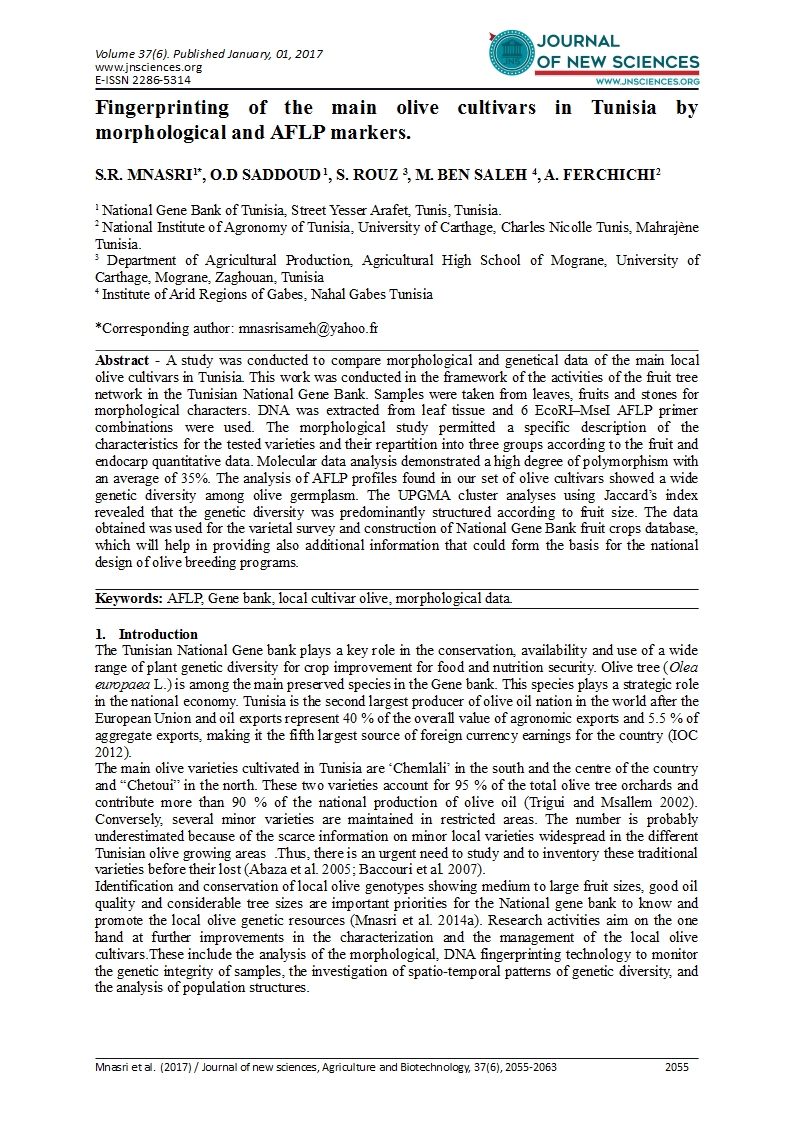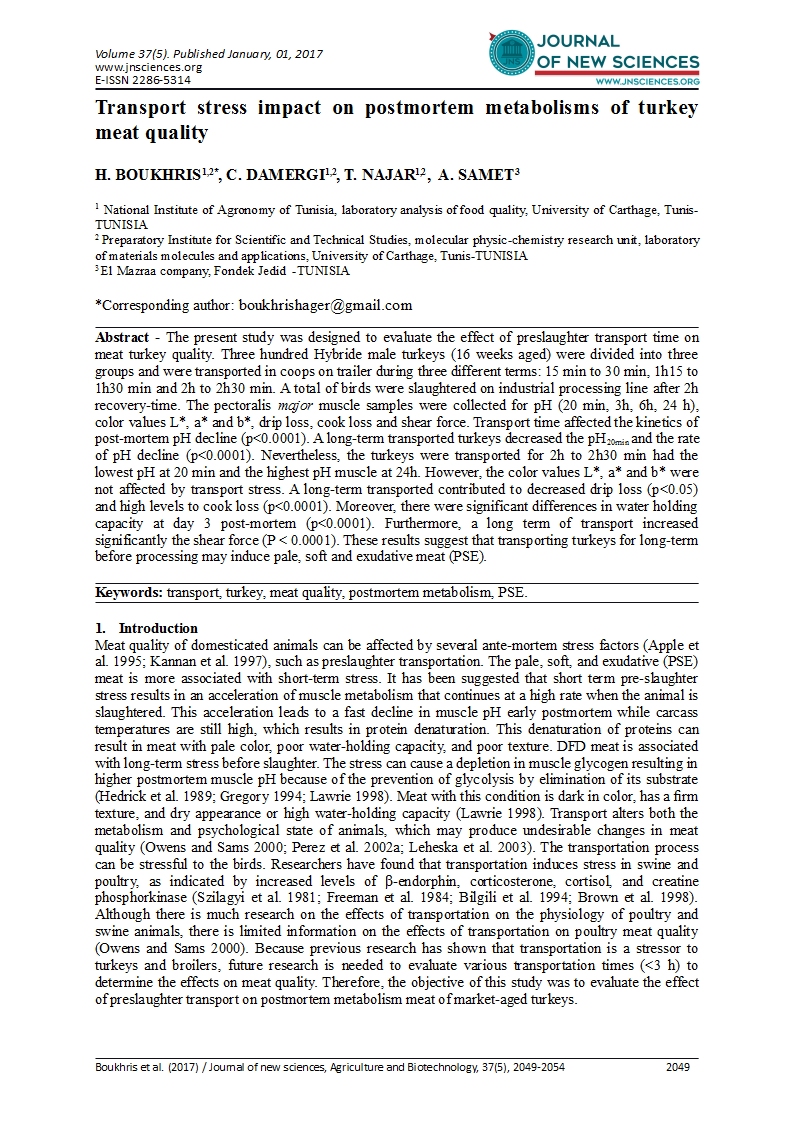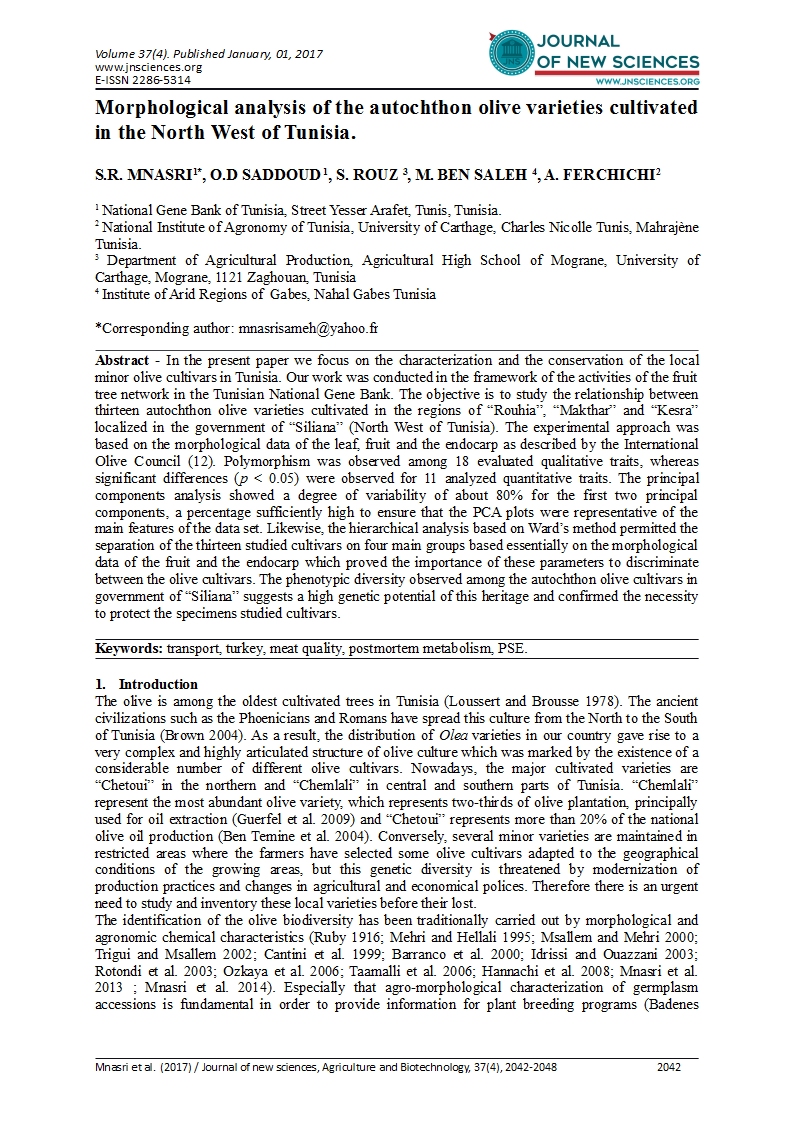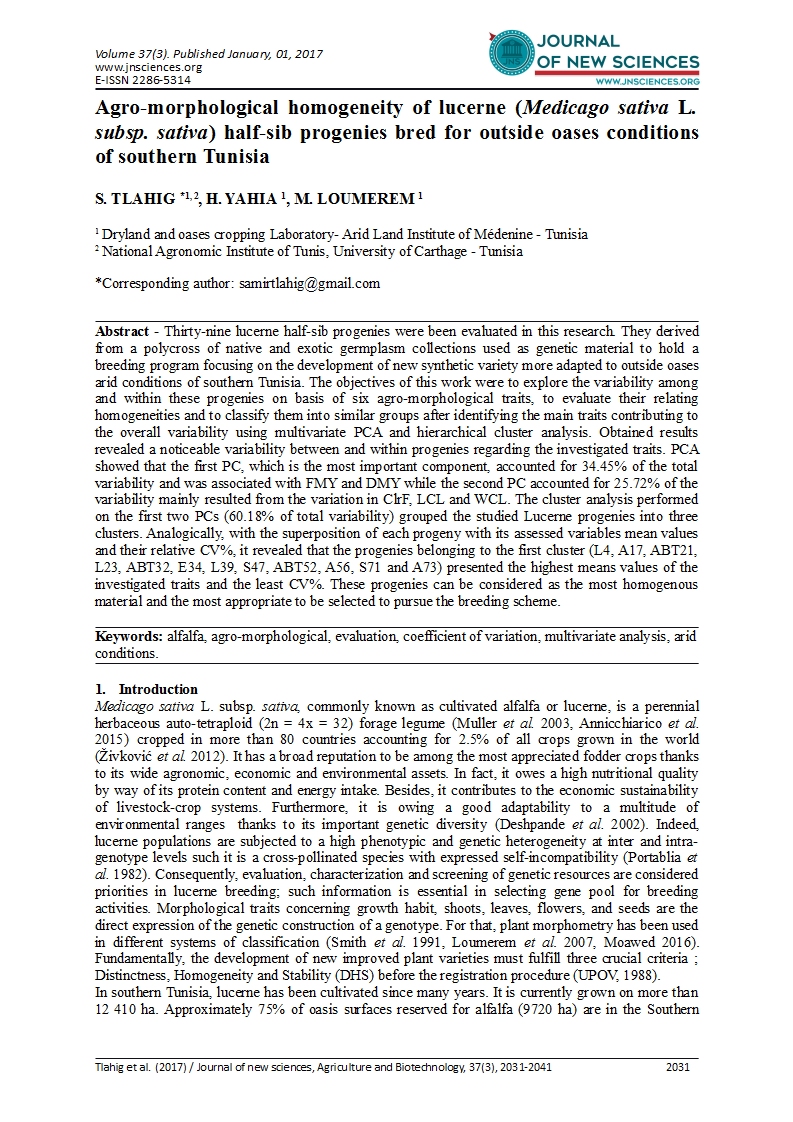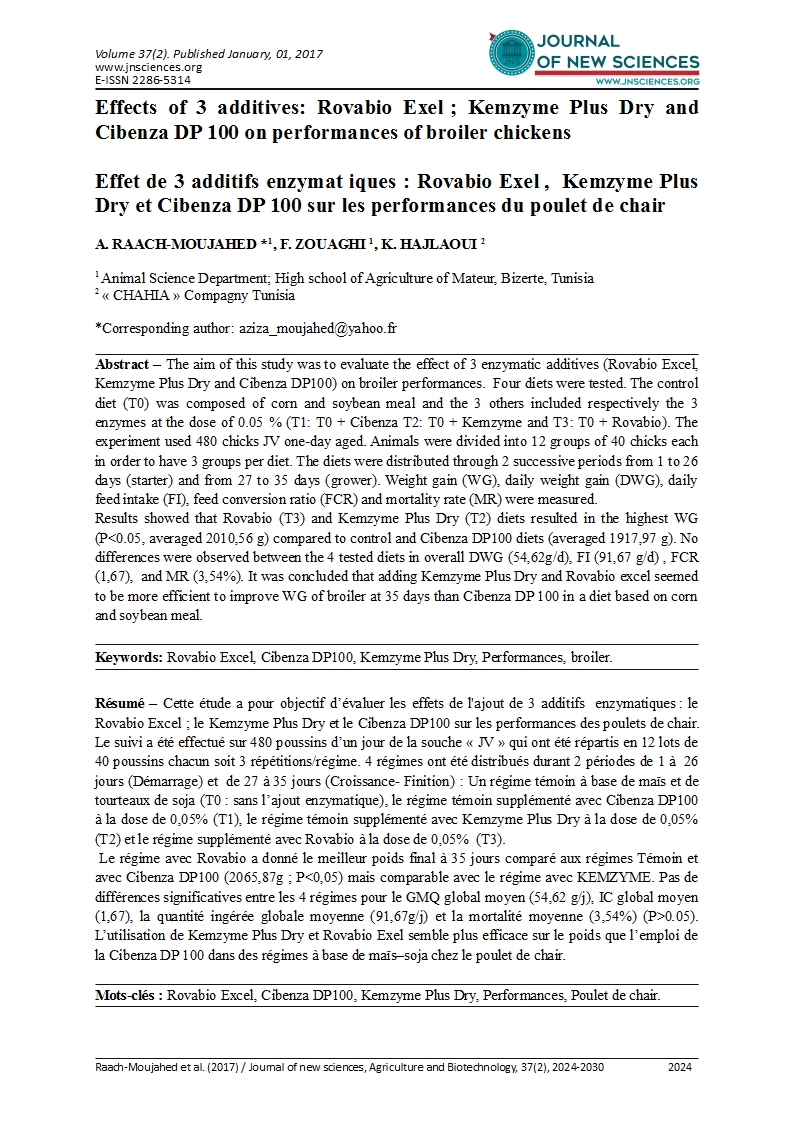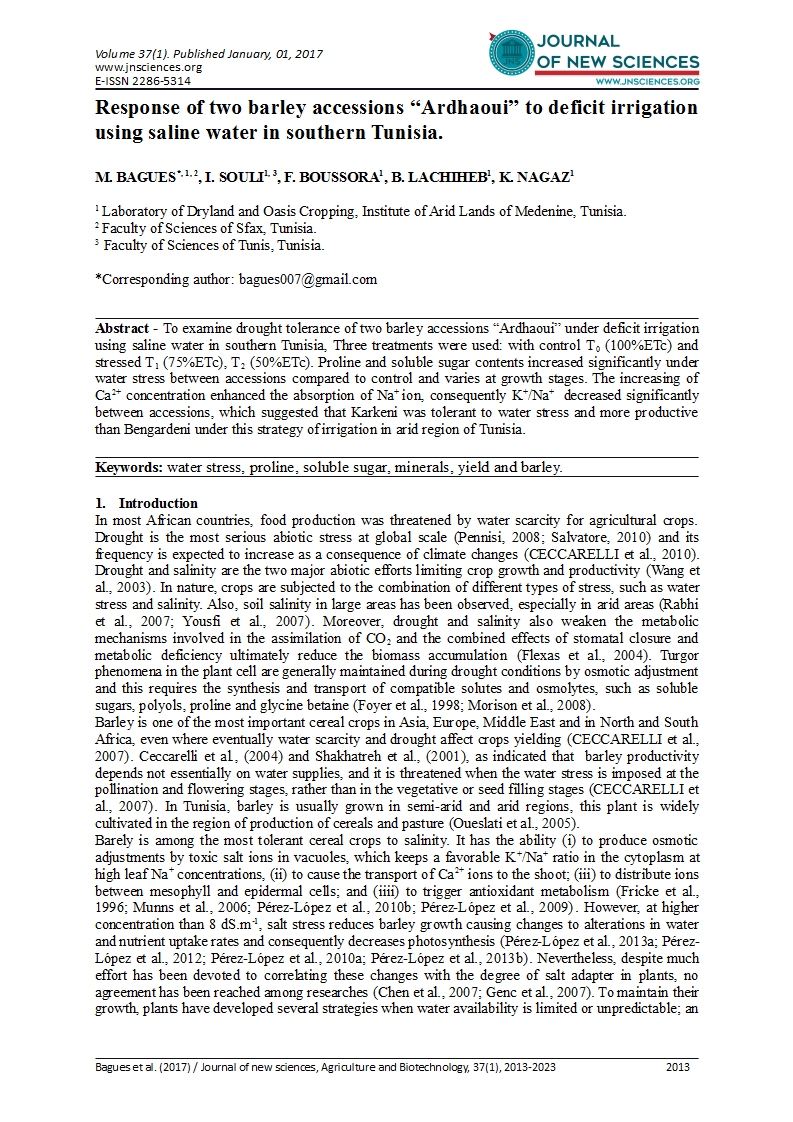- Category: Volume 37
- Hits: 5567
Nutritional characterization and in vitro fermentation parameters of some local protein resources
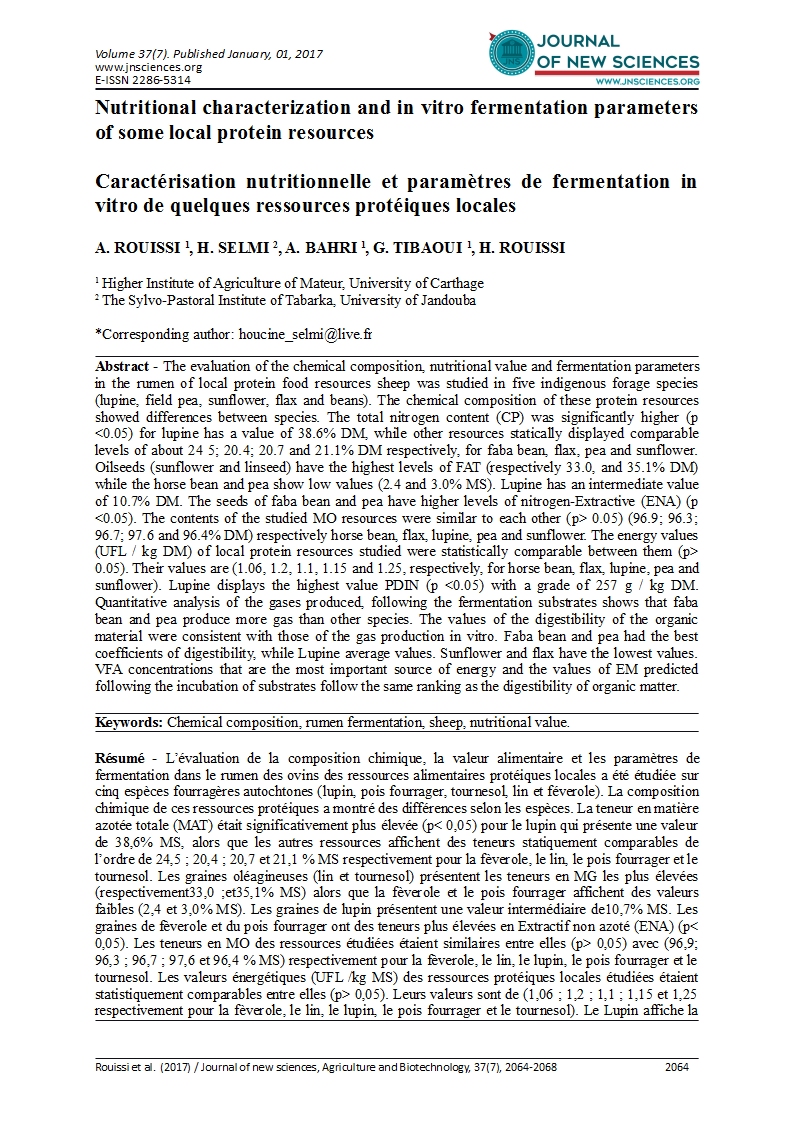
Caractérisation nutritionnelle et paramètres de fermentation in vitro de quelques ressources protéiques locales
A. ROUISSI 1
H. SELMI 2
A. BAHRI 1
G. TIBAOUI 1
H. ROUISSI
1 Higher Institute of Agriculture of Mateur, University of Carthage
2 The Sylvo-Pastoral Institute of Tabarka, University of Jandouba
Abstract - The evaluation of the chemical composition, nutritional value and fermentation parameters in the rumen of local protein food resources sheep was studied in five indigenous forage species (lupine, field pea, sunflower, flax and beans). The chemical composition of these protein resources showed differences between species. The total nitrogen content (CP) was significantly higher (p <0.05) for lupine has a value of 38.6% DM, while other resources statically displayed comparable levels of about 24 5; 20.4; 20.7 and 21.1% DM respectively, for faba bean, flax, pea and sunflower. Oilseeds (sunflower and linseed) have the highest levels of FAT (respectively 33.0, and 35.1% DM) while the horse bean and pea show low values (2.4 and 3.0% MS). Lupine has an intermediate value of 10.7% DM. The seeds of faba bean and pea have higher levels of nitrogen-Extractive (ENA) (p <0.05). The contents of the studied MO resources were similar to each other (p> 0.05) (96.9; 96.3; 96.7; 97.6 and 96.4% DM) respectively horse bean, flax, lupine, pea and sunflower. The energy values (UFL / kg DM) of local protein resources studied were statistically comparable between them (p> 0.05). Their values are (1.06, 1.2, 1.1, 1.15 and 1.25, respectively, for horse bean, flax, lupine, pea and sunflower). Lupine displays the highest value PDIN (p <0.05) with a grade of 257 g / kg DM. Quantitative analysis of the gases produced, following the fermentation substrates shows that faba bean and pea produce more gas than other species. The values of the digestibility of the organic material were consistent with those of the gas production in vitro. Faba bean and pea had the best coefficients of digestibility, while Lupine average values. Sunflower and flax have the lowest values. VFA concentrations that are the most important source of energy and the values of EM predicted following the incubation of substrates follow the same ranking as the digestibility of organic matter.
Keywords: Chemical composition, rumen fermentation, sheep, nutritional value.
Résumé - L’évaluation de la composition chimique, la valeur alimentaire et les paramètres de fermentation dans le rumen des ovins des ressources alimentaires protéiques locales a été étudiée sur cinq espèces fourragères autochtones (lupin, pois fourrager, tournesol, lin et féverole). La composition chimique de ces ressources protéiques a montré des différences selon les espèces. La teneur en matière azotée totale (MAT) était significativement plus élevée (p< 0,05) pour le lupin qui présente une valeur de 38,6% MS, alors que les autres ressources affichent des teneurs statiquement comparables de l’ordre de 24,5 ; 20,4 ; 20,7 et 21,1 % MS respectivement pour la fèverole, le lin, le pois fourrager et le tournesol. Les graines oléagineuses (lin et tournesol) présentent les teneurs en MG les plus élevées (respectivement33,0 ;et35,1% MS) alors que la fèverole et le pois fourrager affichent des valeurs faibles (2,4 et 3,0% MS). Les graines de lupin présentent une valeur intermédiaire de10,7% MS. Les graines de fèverole et du pois fourrager ont des teneurs plus élevées en Extractif non azoté (ENA) (p< 0,05). Les teneurs en MO des ressources étudiées étaient similaires entre elles (p> 0,05) avec (96,9; 96,3 ; 96,7 ; 97,6 et 96,4 % MS) respectivement pour la fèverole, le lin, le lupin, le pois fourrager et le tournesol. Les valeurs énergétiques (UFL /kg MS) des ressources protéiques locales étudiées étaient statistiquement comparables entre elles (p> 0,05). Leurs valeurs sont de (1,06 ; 1,2 ; 1,1 ; 1,15 et 1,25 respectivement pour la fèverole, le lin, le lupin, le pois fourrager et le tournesol). Le Lupin affiche la valeur la plus élevée en PDIN (p< 0,05) avec une teneur de 257 g/kg MS. L’analyse quantitative des gaz produits, suite à la fermentation des substrats montre que la féverole et le pois fourrager produisent plus de gaz que les autres espèces. Les valeurs de la digestibilité de la matière organique concordaient avec celles de la production de gaz in vitro. La féverole et le pois fourrager présentaient les meilleurs coefficients de digestibilité, alors que le lupin a les valeurs moyennes. Le tournesol et le lin ont les valeurs les plus faibles. Les concentrations en AGVT qui présentent la source la plus importante d’énergie et les valeurs de l’EM prédites suite à l’incubation des substrats suivent le même classement que la digestibilité de la matière organique.
Mots clés : composition chimique, fermentation ruminale, ovins, valeur nutritive.

